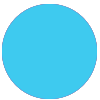Was just reading this post on the Zapier blog and now I have a question. Would I be able to configure a QR code to point to a Zapier webhook and also include some URL query parameters at the end? And would those values be available later in my Zap?
If so, I could do some neat things. The post mentions collecting data for the Zap by pointing the QR to a form. In my hypothetical use-case, I might already know the scanning individual’s name. Rather than ask for it again, I could pass it via parameter.




